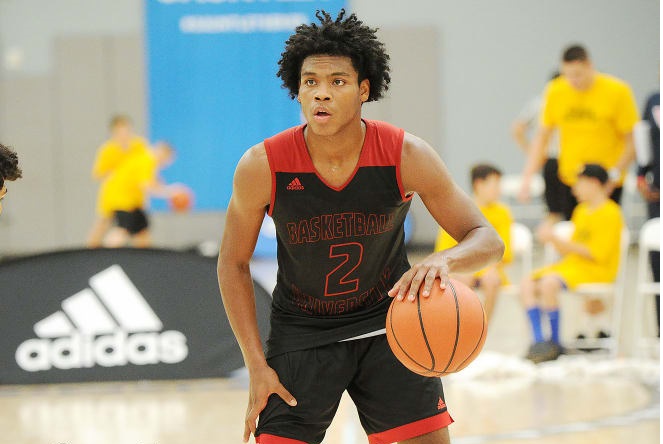I got even more questions about levels after the last article. People had questions about what position their son should get recruited, & what do college coaches look for in each position. So I decided to ask college coaches in depth of what tickles their fancy. ALL coaches DO NOT want to coach effort. That’s the one phrase I heard the most.. “I can’t coach effort”.. Being able to handle himself in the classroom & the community is also #1 on many coaches lists. High character kids are a premium in recruiting, & how parents conduct themselves in public AND ON SOCIAL MEDIA is another statement I heard over & over. As far as positions this is what I got from the coaches. We’ll start with point guards.
The point guard is the most difficult position to play on the court in my opinion. Like a quarterback in football, the point guard must be aware of all the elements of the game. He must be able to initiate his team’s offense while taking care of the ball and making sure all of his teammates are aware of their responsibilities. The best point guards think pass first and can create scoring opportunities for the players around them while still being able to score themselves. And the crazy thing, people think just because you can handle the ball with both hands, that it means you’re a point guard… WRONG..
This position requires a player who is mentally tough, demonstrates leadership skills and is an excellent decision-maker. The point guard is an extension of the coach, and it is imperative for a championship-level team to have a point guard who has those qualities. Point guards who can control the game at the high school & collegiate level, especially during big games, tournaments, usually are winners.
POINT GUARD
1. Leadership: Is he a winner? Does he impact winning? Does the point guard possess the ability to lead the team on the court? Can he be an extension of the coach? Will the players follow him? Does he have the ability and poise to lead the team when they are dealing with adversity? He HAS TO BE TOUGH, mentally, and physically.
2. Decision making: What is the player’s assist-to-turnover ratio? Does he have the ability to make split-second decisions in a fast-paced game? Can he make the right reads in a half court situation (Pick & Roll), and in transition (Knowing when to push the ball or pitch it ahead). Does he know how to control tempo — when to push the fast break or when to slow it down and run the half-court offense? What is the player’s court awareness? Does he understand situational basketball, such as time and score, the shot clock, etc.? He has to be the leader on BOTH ENDS of the floor. Has to be able to guard, ESP is he’s a small point guard. All small PG’s need to be to control the game from a defensive aspect, picking up full court, playing passing lanes, taking charges, etc.
3. Feel & IQ: Does the prospect get his teammates involved and make others around him better? Does he see the floor and have the vision to see the open man and deliver the ball at the correct time? Can he deliver the ball and set up his teammates for easy shots? Can he feed the post? Does he know who his scorers are and how they like to receive the ball?
4. Scoring/shooting: Can the player get to the rim, score or get fouled and get to the free-throw line? Can he shoot the ball well enough to keep the defense honest? It is tougher to have a point guard who can’t shoot in the game today, but point guards who can run the pick-and-roll, especially at the end of the shot clock, and stick the perimeter shot are hard to defend.
5. Size: Although this position has some flexibility with size, it is extremely helpful to have point guards with size and length to go with their speed and quickness. Smaller PG’s have to be SPECIAL, meaning they have to be to affect the game in a variety of ways. Small PG’s HAVE TO BE DOGS!
